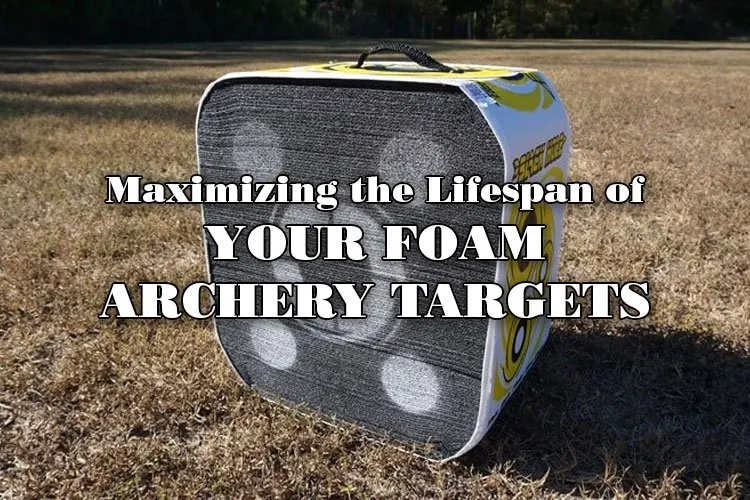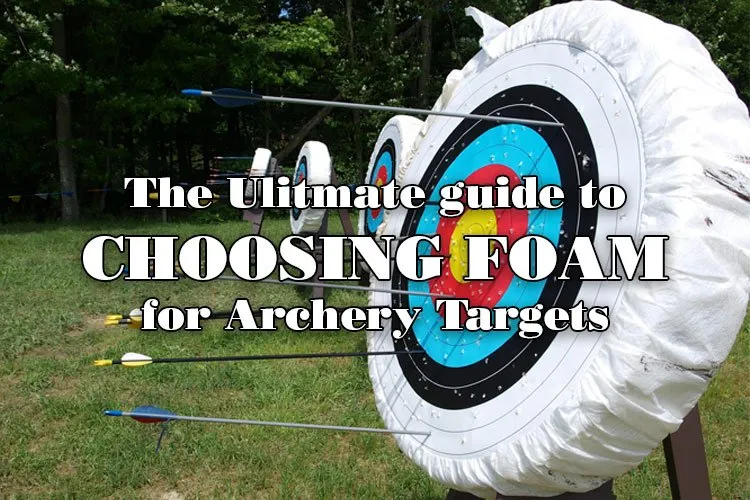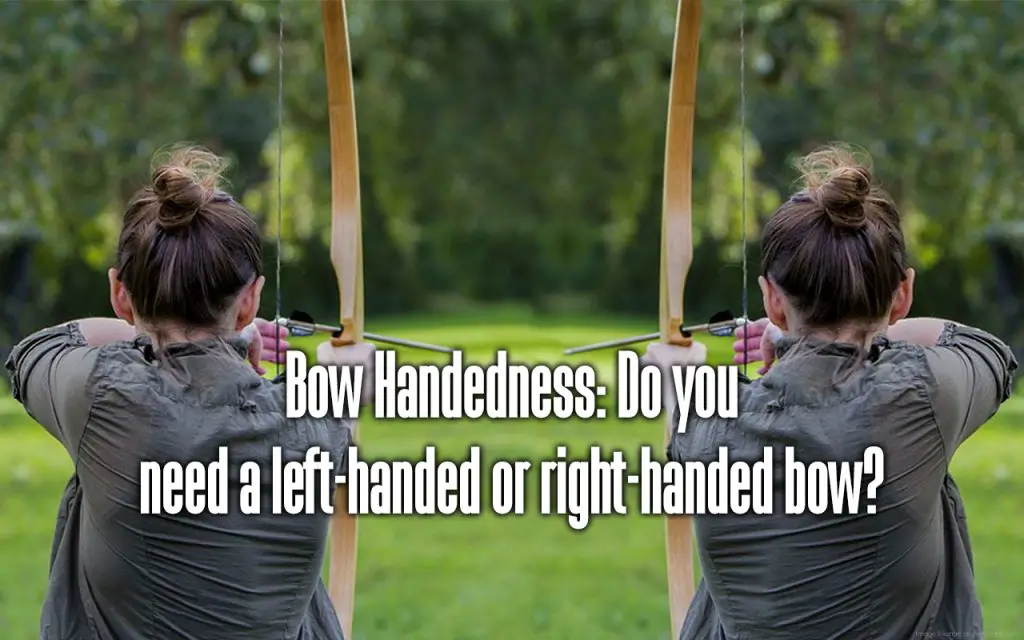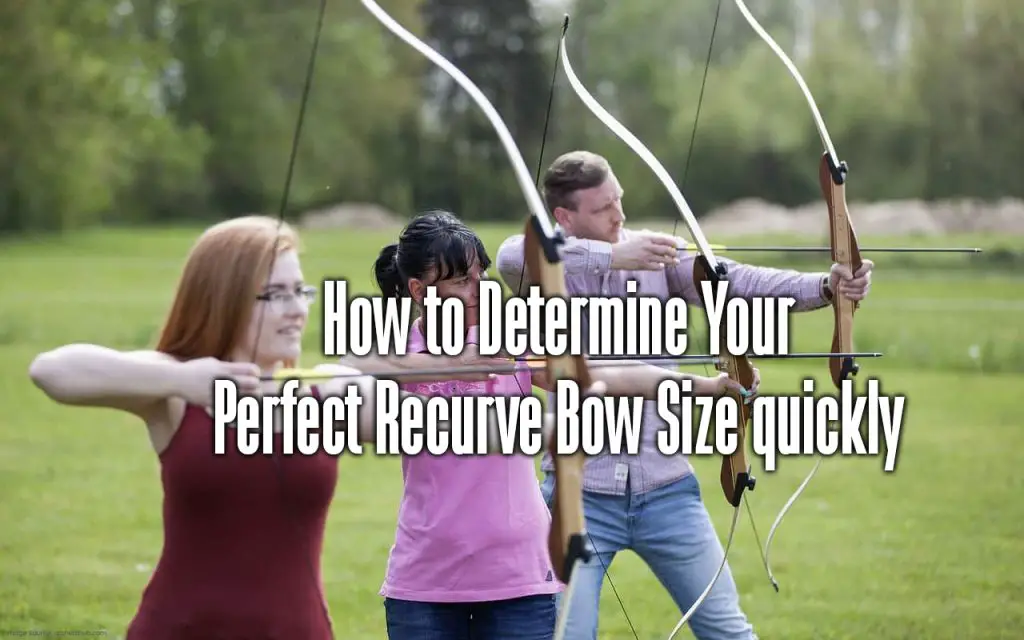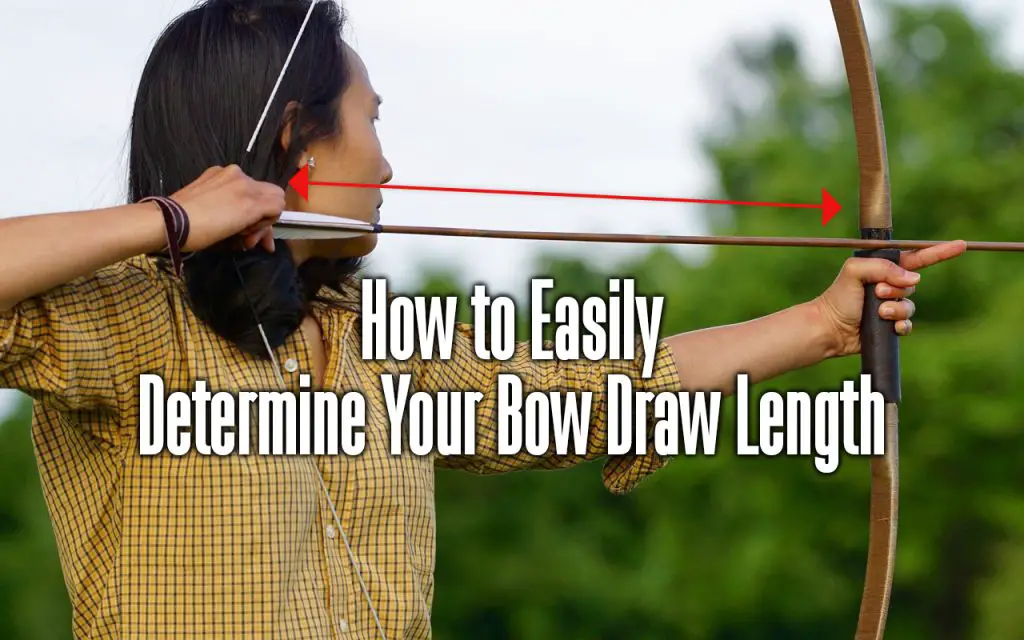Introduction to Foam Archery Targets Understanding foam archery target’s construction and material properties is crucial for their care. High-density foam targets are engineered for durability and arrow-stopping power, balancing stiffness, and elasticity to prevent arrow damage and ensure easy arrow removal. The lifespan of these targets can vary significantly based on the foam quality, usage frequency, and maintenance practices. Strategic Placement and Environmental Considerations Avoid Direct Sunlight: Prolonged exposure to UV rays can degrade the foam, causing it to become brittle and lose its elasticity. Minimize Moisture Exposure: While some foam is water-resistant, continuous exposure can promote mold growth or internal breakdown. Storing the target off the ground can prevent moisture wicking. Temperature Fluctuations: Extreme temperatures can affect the foam’s structure. Avoid placing the target near heat sources or in areas prone to freezing. Usage and Wear Management Even Usage: Regularly rotate and flip the target to ensure arrows impact different areas, promoting even…
Innovations in Foam Archery Targets
The evolution of archery from a historical skill to a modern sport and recreational activity has been significantly influenced by advancements in equipment, particularly foam archery targets. Modern technologies have revolutionized these targets, enhancing durability, sustainability, and user experience. This overview explores these innovations, their benefits, and their impact on casual archers and competitive athletes. Material Innovations High-Density Polyethylene (HDPE) Foam Description: A leap from traditional foams, HDPE offers exceptional durability and arrow-stopping power with improved self-healing properties. Benefits: Increased lifespan, resistance to weather elements, and suitability for high-speed arrows, including those used in compound bows and crossbows. Ethylene-vinyl acetate (EVA) Blends Description: Advanced EVA blends have been developed to offer a softer touch for easy arrow removal without sacrificing target integrity. Benefits: Enhanced user experience with easier arrow extraction, reduced shooter fatigue, and maintained target density for repeated use. Structural Innovations Layered Foam Design Description: Utilizing layers of foam with varying densities and materials…
Comparing Foam Archery Targets: What Works Best for Outdoor vs. Indoor Use
Creating a comprehensive comparison between foam archery targets for outdoor versus indoor use in a brief overview. At the same time, the request suggests a deep detail of 3000 words; we’ll focus on the key aspects that differentiate how targets should be selected and utilized based on their environment. This condensed overview provides insights into materials, design considerations, durability, maintenance, and performance factors tailored to each setting. Introduction Archery, a sport with a rich history, has evolved with advancements in equipment and materials, including the development of foam archery targets. These targets offer versatility, durability, and practicality indoors or outdoors. The type of foam, construction, and maintenance of these targets can significantly influence their performance and longevity in different environments. Foam Material and Construction Polyethylene Foam: Known for its high density and durability, it’s ideal for outdoor targets due to its resistance to weather elements. EVA Foam: Offers a softer, more flexible…
DIY Foam Archery Targets: Step-by-Step Building Guide
This comprehensive guide will walk you through each process step, from planning and material selection to construction and maintenance. You’ll have a functional, durable, and cost-effective archery target tailored to your specific requirements. Introduction Archery is a sport of precision, requiring skill with the bow and quality equipment for practice. While commercial archery targets are widely available, building your DIY foam Archery target offers customization, cost savings, and the satisfaction of DIY craftsmanship. This guide will focus on creating a layered foam target, which is versatile and suitable for various arrow types. Planning and Design Before diving into the construction, planning your target is crucial, considering its intended use, size, portability, and durability. Objective Identification Define whether the target will be used for field tips, broadheads, or both. This decision impacts foam choice and design. Size and Portability Determine the target’s dimensions based on your practice space and storage. Larger…
The Ultimate Guide to Choosing Foam for Archery Targets
The ultimate guide to choosing foam for archery targets involves understanding the critical factors influencing performance, durability, and safety. Archery, a sport with ancient roots, has evolved significantly, with equipment advancements enhancing the experience. Foam targets represent one of these advancements, providing archers with reliable, durable, and versatile options for practice and competition. This guide covers essential considerations, including foam types, density, durability, arrow compatibility, environmental factors, maintenance, and cost-effectiveness, to help archers make informed decisions. Understanding Foam Types Foam targets are made from various materials, each offering unique benefits. The most common types include: Polyethylene Foam Known for its high density and durability, polyethylene foam targets are wear-resistant and offer excellent stopping power for arrows. They are ideal for outdoor use due to their water-resistant properties. Ethylene-Vinyl Acetate (EVA) Foam EVA foam is softer and more flexible than polyethylene, providing good arrow-stopping capability and easier arrow removal. Its resilience…
Arrows Buyers Guide – The Complete Infographic
[Updated 1 January 2024] Depending on your bow setup, and whether you compete in 300 or 3-D tournaments or just hunt for whitetails in the Back Forty, finding the arrow that is right for you can be a daunting task. This arrows buyer’s guide will help you understand the differences between the main types of arrows and the fletching that go along with them. Aluminum Aluminum is the most popular arrow shaft material since the 1970s and still the most commonly used material today. Advantages: Inexpensive production Strong constructional integrity Can rebound Rebounding from minor bending Weather and humidity resistance Extreme straightness Disadvantages: Heavier than carbon Difficult to modify It can be affected by temperature changes It can vibrate more upon release Carbon Early carbon shafts were lightweight and pultruded with an extremely small diameter. These shafts did produce a lighter arrow but were prone to splitting upon impact and…
How to Determine Your Eye Dominance
Your eye dominance is crucial in deciding whether to shoot a left- or right-handed bow. Most people are right-eye dominant, estimated at two-thirds of the population, whereas one-third is left-eye dominant. However, there is a minority who don’t have a single dominant eye. Here are a few quick ways to determine your dominant eye. Eye Dominance Tests The Instinctive Test If you were to look through a telescope, which eye would you use? If you can easily answer that question, and the answer is always the same, then your dominant eye is probably being used. Miles Test The Miles test entails holding both arms out and making a circle with each set of fingers. With eyes open, you should focus the center of the circles on an object in the distance. Now, with your left eye closed, does the object appear to move or jump out of the circle? If…
Bow Handedness: Do you need a left-handed or right-handed bow?
Bow Handedness is essential to shoot a bow accurately. Need help determining if you need a right or left-handed bow? How much do you know about bows, specifically the difference between a left-handed and right-handed bow? Let’s see. The importance of bow handedness cannot be understated. Depending on the user’s bow handedness, compound bows, recurve bows, and longbows are made slightly differently. Begin by determining your dominant eye, then follow our easy guide to choosing if you should shoot a right or left-handed bow! Next, you need to figure out if you’re right-handed or left-handed. If you didn’t know, here’s how to tell if you’re left or right-handed. Bow Handedness Whether you are left-handed, right-handed, or ambidextrous can tell us a lot about you. You can tell which hand is your dominant one if it: You write with Works your computer mouse Holds your toothbrush Holds your tennis racket You…
How to Determine Your Perfect Recurve Bow Size quickly
[Updated 1 February 2024] If you’ve been looking at recurve bows on the internet or gone to specialist shops and examined different brands, you’ll have noticed that complete Recurve bow sizes range from 48″ to 72″. Recurve bows are forgiving; you can shoot them with a draw length that is either too short or too long to get the most out of your bow. You must be drawn to their sweet spot with recurve bows if you want the best results. The sweet spot is the balance point at which the advertised draw weight matches the drawn weight, and drawing beyond this point will result in a rapid rise in draw weight known as “stacking,” which can make you inaccurate since you’re pulling more force than anticipated, and your bow will be pulled too short. The bow sizes in the tables below are measured in inches, and this inch measurement…
How to Easily Determine Your Bow Draw Length
[Updated 1 February 2024] There’s a simple technique for determining your bow draw length without a bow. To calculate your arm span (fingertip to fingertip), divide the number by 2.5. The answer will be quite accurate. Did you know? Michael Phelps, an Olympic swimmer, has a wingspan of 79 to 80 inches, which would yield a bow draw using his arm span of 32″. Arm Span Measurement To measure your wingspan, stand up and extend your arms on either side of you with your palms facing forward. Don’t stretch out your arms; instead, hold them in position for a natural measurement. You could need a buddy’s assistance with this (unless you come up with a method to do it yourself, such as standing against a wall with ink on your fingertips, making markings, and calculating the measured distance). Ask your buddy to take a measurement across your back, ensure the…


